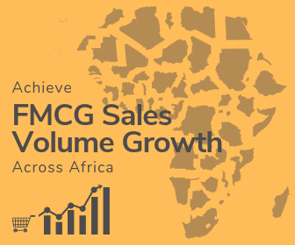It’s a good question and one that Enchange is often asked. Enchange has been helping clients in Africa for over 25 years. Whilst many things have changed in that time, for example, the use and availability of technology, many things remain the same.

One of the constants in African markets for consumer goods companies is the difficulty and complexity of the Route to Market. Not only are there potential cultural, political, geographic, security, logistical, commercial, financial, (I could go on?) etc., considerations, but there are also availability issues. Not availability in terms of products, brands or SKU’s, but availability of effective distribution and distributors.
If we accept that a majority of FMCG multinationals choose Indirect Distribution in African markets, then they are relying on other people to look after the movement of product from factory to consumer.
So, who are these ‘other people’? There are many different types of distributors across Africa. Although large international operators can be a rare as the beautiful Pangolin, there are some large organised international logistics operators, sometimes referred to as 3PL or 4PL’s. There are local distributors who cover specific territories, there are smaller internationally owned operations who can operate across several markets or be country specific. There are some distributors who supply some smaller distributors, often referred to as sub distributors, stockists or sous dépôts. There are also individual single person distributors, in some cases using non mechanised distribution methods.
Most of these organisations deliver product to retailers, but some supply wholesalers or cash & carry’s, where the retailers usually collect from. All of these organisations vary hugely in size, sophistication, execution, ability, communication, information sharing, resources, effectiveness, coverage and in delivery of specific or agreed results. Very often the difficulty can be finding these organisations, especially when the geography becomes more rural.
So, to begin answering the question, ‘How do FMCG Companies Increase Sales Volume in Africa?’, we need to ask a few more questions of our own:
- Have we graded, assessed or ranked our current distributors, and those potentially available across the country?
- Do we have an agreed approach to managing our distributors?
- How often do we visit them? Do we have our own people on the ground in and out of the distributor’s location regularly? Do we attend retail visits with our distributor’s teams?
- Do we understand our distributors issues? Do we really understand our distributors’ issues? Do we really, really, really understand our distributors issues? You get the point.
- Have we properly conveyed our goals? Have we set them realistic objectives?
- Have we provided an incentive for them to achieve these objectives?
- Do they have the resources and the route map to deliver on what we have asked?
- Do they have their own people visiting retailers? Are these people properly trained? Do they have the right tools to deliver?
- Do they understand relationship management from a large or small distributor level, through sub distributor, wholesaler level, down through key account, modern trade convenience or grocery level, right down to mom & pop stores, street vendors, open windows, kiranas, souks, spazas, (or whatever term we use for small independent stores)?
- Have we assigned territories or zones to our distributors, not only to ensure we have full coverage of the retail universe, but to make sure we are essentially not fighting with ourselves?
- Are we sharing success and the routes to success from one distributor to another?
- Where does our competition fit into this scenario? Are they using the same distributors as we are? Is the competition achieving better results than we area? If so, why?
- Do we have agreed commercial terms with the distributors?
- Are these commercial terms fully understood and is there an operational plan to achieve them?
- Has this operational plan been cascaded down through the distributors organisation and clearly explained? Has this explanation filtered out to the distributors retail facing staff?
- Do we provide feedback to distributors? Is this feedback constructive and centred around improving performance?
- Do we use both the carrot and the stick approach? Do we use too much stick?
- Do we work in a cash or credit market? If the latter, how do we control credit in all parts of the distributive supply chain? How do we ensure, for example, that distributors use credit to fund the working capital for our product & not their other businesses?
These, and other questions like them, are what Enchange have been answering for many years, including specifically in 2019 to deliver results focused Route to Market strategies for our clients.
Please subscribe to my blogs on the top right hand side of this page, to ensure you don’t miss the latest updates on RtM excellence in execution. If you would like to know more about our approach to Route to Market excellence click here.







